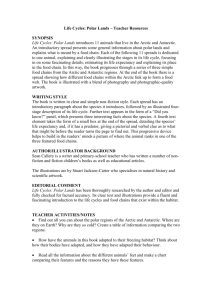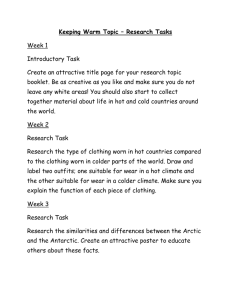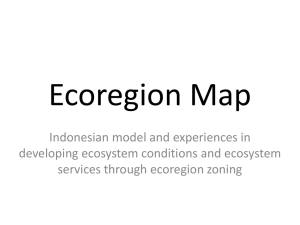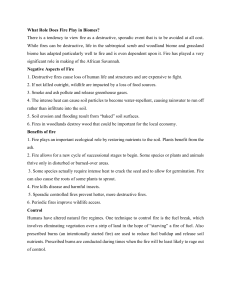Polar deserts - Tartu Veeriku Kool
advertisement
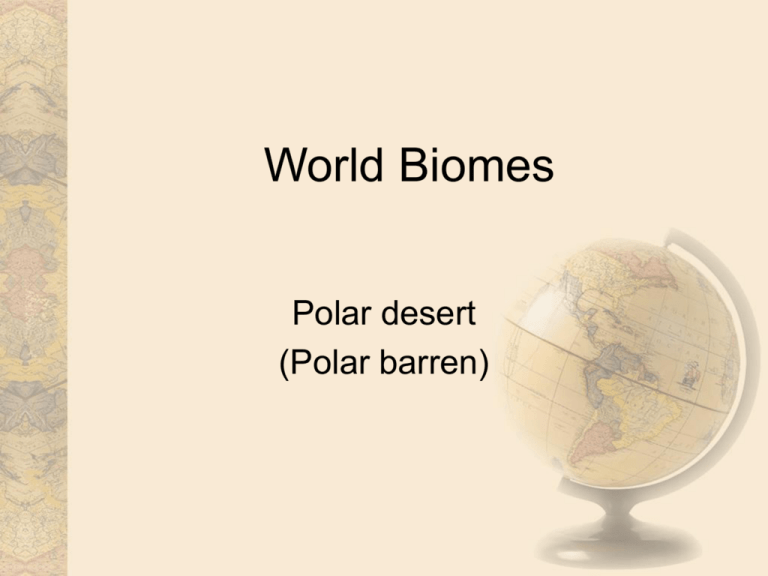
World Biomes Polar desert (Polar barren) Introduction • Polar deserts on the Earth cover nearly 5 million square kilometers and are mostly bedrock or gravel plains. Sand dunes are not prominent features in these deserts, but snow dunes occur commonly in areas where precipitation is locally more abundant. Climate • Polar deserts are areas with annual precipitation less than 250 millimeters and a mean temperature during the warmest month of less than 10° C. • In the winter, temperatures can be as low as -30 - -60° C • Also the winds have an enormous effect on the weather. They bring dramatic storms with visibility reduced to less than 100 feet. • The year is divided about equally between day (summer) and night (winter) owing to the continuous position of the Sun above or below the horizon during these seasons. Distribution of biome • At the North Pole is the Arctic Ocean, lying in the midst of islands and landmasses (the northernmost being Greenland) and the Canadian arctic archipelago. In all lowland areas the extreme cold is relieved with abovefreezing temperatures for a month or more each year, allowing for a varied plant and animal life. • The South Pole is occupied by the continent of Antarctica, the mountains of which project through the world's greatest ice cap. No more than about 4 percent of the Antarctic's land is capable of sustaining life, while only the coast of Graham Land on the Antarctic Peninsula and several off-lying islands are warmed each year by above-freezing temperatures. Soil • Considerable cover of a soil crust, which develops in sites exposed to continued surface runoff from melting snow for some of the short growing season. Plants • Plants cover less than five percent of this ecoregion because of the very cold temperatures, short growing season, and dry soil. Heath, mosses, and lichens are hardy enough to survive in the harsh climate, and flowering plants such as the Arctic poppy have blossoms that track the sun during the day, concentrating the sun’s heat on themselves. Arctic Poppy Plants in Antarctica Animals • All the wildlife is connected with sea, because there is very little food on land. • Vast colonies of seabirds can be found nesting on the cliffs of this ecoregion. • Not many animals spend all year there. Harp seal Walrus Polar bear Atlantic Puffin Seabird colony Beluga Narwhal Adelie penguin Emperor penguin Antarctic Petrel Southern Fulmar Leopard seal Southern elephant seal Blue whale Killer whale People I • Few direct threats exist for this ecoregion, simply because humans are largely absent. But where humans have tread, this ecoregion has suffered. Plans for a northern shipping route through the Russian Arctic could open up oil, gas, and other natural resources for exploitation. This could increase the risk of oil spills and introduce species such as rats to the ecoregion, which could have drastic consequences for nesting seabirds. • The Novaya Zemlya area has a unique problem. It has been serving as a test area for nuclear weapons and suffers from elevated levels of plutonium, cesium, and other radioactive pollutants. People II • Global climate change could upset the balance of life in the ecoregion by melting ice, raising temperatures, and upsetting the food chain. • Ozone depletion threatens to leave the Antarctic open to dangerous amounts of the sun’s ultraviolet radiation. And pollution both from scientific expeditions and a growing tourism industry could also become threats if not well managed.

